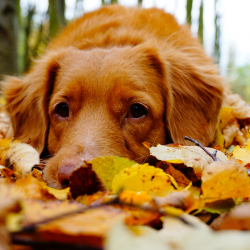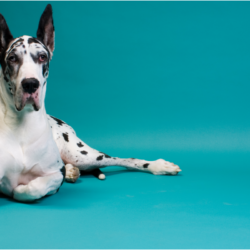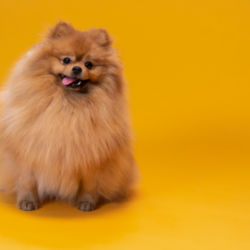At a time when opportunistic diseases are becoming more and more widespread, both in human medicine and in veterinary medicine, mycology, long considered to be the poor relation of parasitology, is acquiring more importance. However, the diagnosis of animal dermatophytes can only rarely be obtained by clinical examination alone or by collecting memorials.
What are canine dermatophytias ?
Canine dermatophytes are superficial skin infections, most often contagious, caused in particular by filamentous fungi called dermatophytes. The latter are keratinophilic (capable of feeding on keratin and responsible for infections of the skin and integuments) and keratolytic (capable of dissolving keratin, the main protein constituting the horny layer of the epidermis) and invade only the structures or keratinized epidermal appendages (hairs, stratum corneum and claws). In very rare cases, dermatophytia can be subcutaneous or even deep, especially in immunocompromised animals.
Where do canine dermatophytes come from ?
Dermatophytes colonize the soil where they are able, not only to survive, but also to multiply on keratinized debris according to a saprophytic cycle. Some of them can exceptionally become pathogenic and are then the cause of non-contagious and sporadic dermatophytias. Under these conditions, the mode of infection is linked to contact with contaminated soil. This is the case for Microsporum gypseum which is an uncommon agent of canine dermatophyte, more frequently encountered in cats.
Geophilic dermatophytes :
They are not agents of zoonoses. Zoophilic and anthropophilic dermatophytes are obligate parasites, adapted respectively to animals and humans, which constitute their main reservoir. They are incapable of multiplying in the external environment but can survive there as particularly resistant arthrospores, present in the hair and dander shed from infected individuals.
Zoophilic and anthropophilic dermatophytes :
They are responsible for contagious dermatoses. They are spread primarily through direct contact with an infected individual, but infection through indirect contact from a contaminated environment is not negligible. Their host specificity is generally incomplete. Thus, most zoophilic agents are transmissible to humans.
The most common zoophilic dermatophytes in dogs are Microsporum canis and those belonging to the Trichophyton mentagrophytes complex. In Europe, M. canis remains the agent responsible for the majority of dermatophytias in dogs. Dogs are most often infected through direct contact with an infected congener. Transmission from an environment contaminated with arthrospores, which can be viable for several years, is possible but probably less effective.
Dermatophytes et inflammation
Although dermatophytosis is most often limited to the surface layers of the skin, it is sometimes very inflammatory. Generally, there is an inverse relationship between the degree of inflammation and the duration of the infection: the more inflammatory the lesions, the less they persist, even having a natural tendency to heal themselves. In general, a dermatophyte not adapted to the host it infects causes a more intense inflammatory reaction than that induced by a dermatophyte in its natural host.
Some prevention tips :
To avoid contaminating your family or your other animals, there are several small things you can do on a daily basis, namely:
- Keep your sick animal away from other animals and people living under your roof
- Wear disposable gloves and a regularly washed gown when handling your sick animal
- Vacuum very often to pick up contaminated hair from around your home and throw the bag in the trash
- Regularly wash the bedding and fabrics that have been in contact with the sick animal. Machine washing in a long cycle at 30 ° C is effective
In short, you have to be very careful when you have an animal affected by dermatophytes, especially if it is ringworm, because this fungus is transmitted very easily.
If any suspicious lesions appear on your own skin, do not delay in seeing your doctor. Ringworm can leave permanent marks on your skin
Some essential oils antimycotics in cutaneous use
Palmarosa whole flowering plant essential oil :
Palmarosa is considered the best antifungal against dermatophytes. It has a higher activity than certain reference antifungals. The geraniol it contains changes the composition of the cell membrane. It is indicated in cutaneous mycosis.
Bergamot zest essence :
Bergamot is known among other things for its antifungal properties.
Essential oil of true lavender flowers :
Fine or true lavender acts as an excellent antifungal on dermatophytes.
The essence of Scots pine needles :
Healing and local anti-inflammatory, Scots pine is also antifungal against dermatophytes.
Frankincense resin from Oliban :
Frankincense has demonstrated its antifungal effect in vitro against dermatophytes.
Essential oil from leafy twigs of evergreen cypress :
Cypress has antiviral properties demonstrated in vitro against Candida albicans and dermatophytes. Cortison-like, evergreen cypress is a stimulant of the pituitary-adrenal cortex, useful in prolonged inflammatory conditions.
Sources :
- Kwong-Chung KJ, Bennet JE. Medical mycology. Philadelphia, London: Lea and Febiger, 1992
- Symoens F, Jousson O, Planard C, et al. Molecular analysis and mating behaviour of the Trichophyton mentagrophytes species complex. Int J Med Microbiol 2011
- Delespaul Q, De Billerbeck VG, Roques CG, Michel G, Marquier-Vinuales C, Bessiere J-M. The Antifungal Activity of Essential Oils as Determined by Different Screening Methods. Journal of Essential Oil Research 2000







